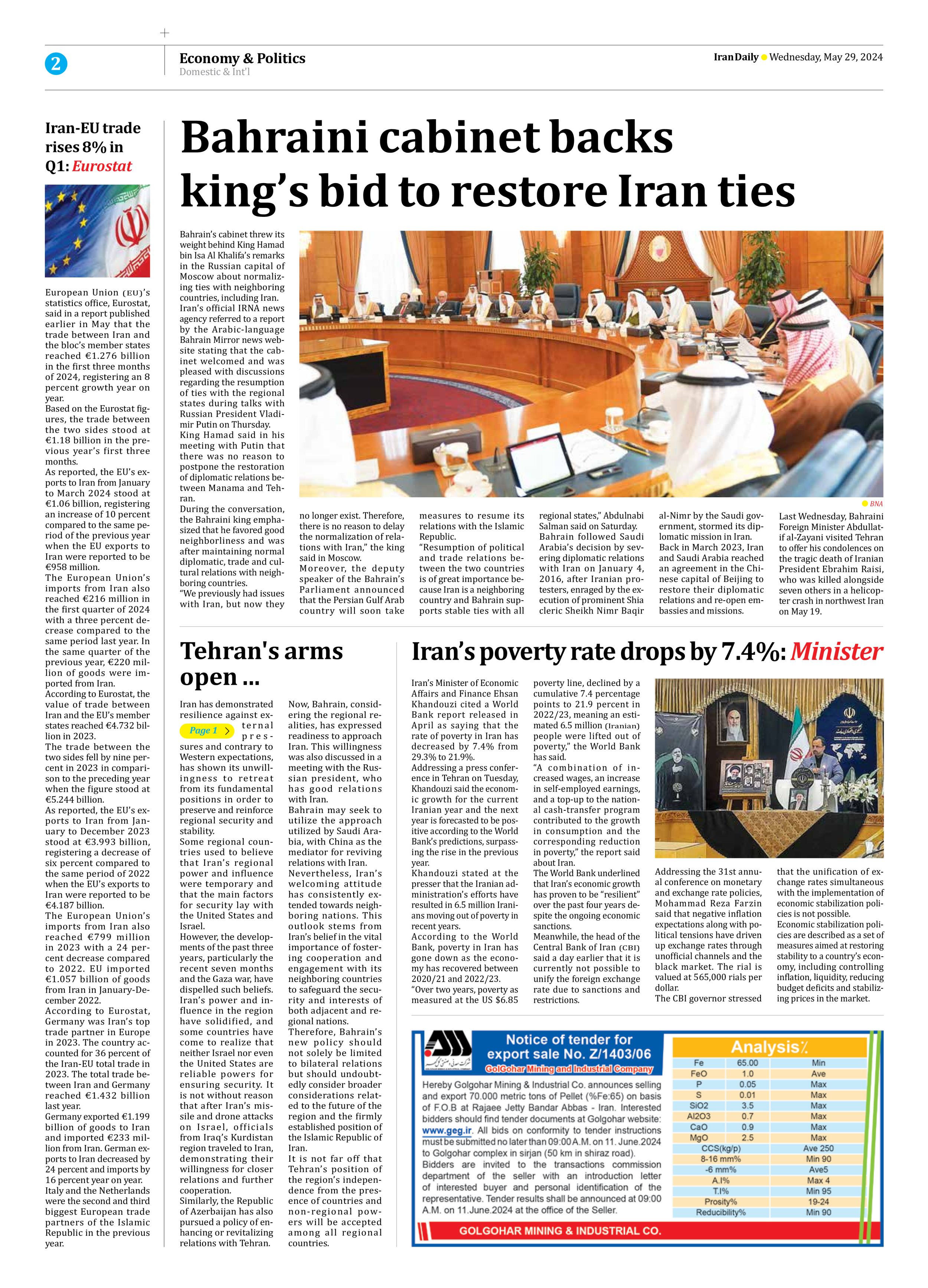
Copy in clipboard...
Iran’s poverty rate drops by 7.4%: Minister
Addressing a press conference in Tehran on Tuesday, Khandouzi said the economic growth for the current Iranian year and the next year is forecasted to be positive according to the World Bank’s predictions, surpassing the rise in the previous year.
Khandouzi stated at the presser that the Iranian administration’s efforts have resulted in 6.5 million Iranians moving out of poverty in recent years.
According to the World Bank, poverty in Iran has gone down as the economy has recovered between 2020/21 and 2022/23.
“Over two years, poverty as measured at the US $6.85 poverty line, declined by a cumulative 7.4 percentage points to 21.9 percent in 2022/23, meaning an estimated 6.5 million (Iranian) people were lifted out of poverty,” the World Bank has said.
“A combination of increased wages, an increase in self-employed earnings, and a top-up to the national cash-transfer program contributed to the growth in consumption and the corresponding reduction in poverty,” the report said about Iran.
The World Bank underlined that Iran’s economic growth has proven to be “resilient” over the past four years despite the ongoing economic sanctions.
Meanwhile, the head of the Central Bank of Iran (CBI) said a day earlier that it is currently not possible to unify the foreign exchange rate due to sanctions and restrictions.
Addressing the 31st annual conference on monetary and exchange rate policies, Mohammad Reza Farzin said that negative inflation expectations along with political tensions have driven up exchange rates through unofficial channels and the black market. The rial is valued at 565,000 rials per dollar.
The CBI governor stressed that the unification of exchange rates simultaneous with the implementation of economic stabilization policies is not possible.
Economic stabilization policies are described as a set of measures aimed at restoring stability to a country’s economy, including controlling inflation, liquidity, reducing budget deficits and stabilizing prices in the market.







